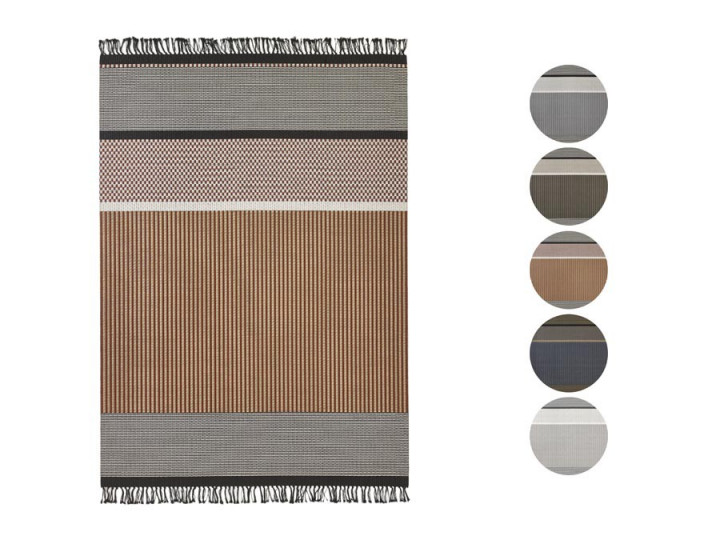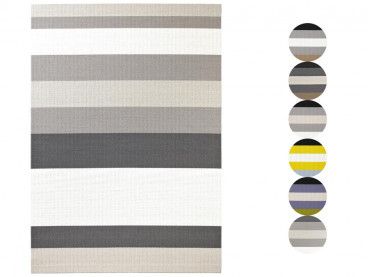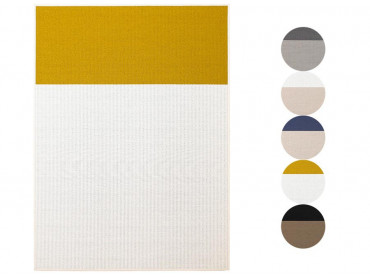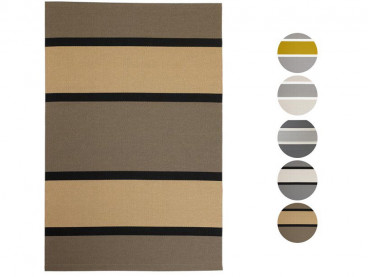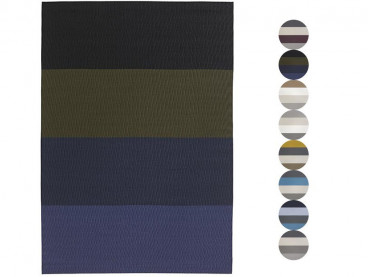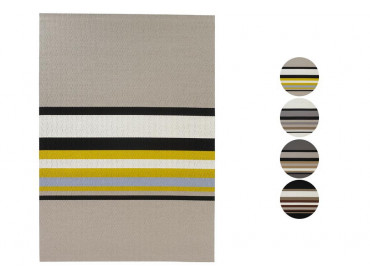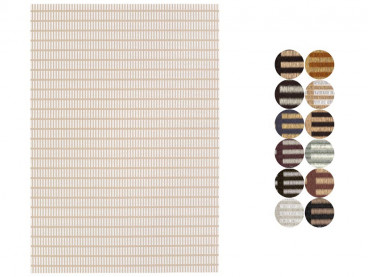Mid-Century modern scandinavian rug San Francisco by Ritva Puotila. Custom size. 5 colours
-
Ritva Puotila
-
Woodnotes
- WN008 Delivery time : 10 to 12 weeks
(€ 260.00 / m2)
Mid-Century modern scandinavian rug San Francisco by Ritva Puotila.
Custom size. 5 colours. The San Francisco carpet's design is an asymmetrical combination of different vertical and horizontal stripes and squares creating a relaxed and easy atmosphere in the interior. Due to the combination of different patterns, colors and natural material, The San Francisco carpet can be easily matched with different styles and interiors. The ends on San Francisco carpet have fringes (length of fringes 9 cm) and it is designed for reversible use.
San Francisco paper yarn carpet was granted an Interior Innovation Iconic Awards 2017 Best of Best. The Interior Innovation Award is handed out by the German Design Council, a leading competence center for design promotion.
All samples are visible at our showroom.
Options in extra (please consult us): edging, non-skid backing.
Price indicated for 1 m2 in 140x220cm. The price of m2 is decreasing according to the size. (ask us for a precise quotation).
| Condition | New product, on demand |
| Dimensions | Custom size. Size maxi : 2,5 x 5 m. Thickness : 6 mm. Weight : 1,9 kg/m2 |
| Material | 86% paper yarn (welft) and 14% cotton (chain). Finish: fringes. hand-sewn. |
| Style | Contemporain Neuf |
| Origin | Sweden |
| Fournisseur | Woodnotes |
Ritva Puotila
Ritva Puotila, artistic director of Woodnotes, founded Woodnotes with her son Mikko Puotila in 1987, basing the company on the concept of paper yarn. Puotila says that paper has properties that differ fundamentally from the other fibres she use: its lightness and rustling, its clean natural colour when unbleached, its whiteness and the glow of colour. Ritva Puotila has raised the status of this traditional Finnish material to a new level, that of designer textile. From the start, the Woodnotes collection consisted of a broad range of interior textiles, from carpets and blinds to upholstery and small objects for the home. Woodnotes’ foray into this new field was rewarded immediately during its founding year with the French Oscar Prize, continuing with further recognition in subsequent years.
Woodnotes’ new pile rugs have their roots in the traditional Finnish ryijy, a rug-like tapestry. During her student years, Puotila worked with stained glass, and she brought its spirit to the first ryijy patterns she designed for competitions organised by the Friends of Finnish Handicraft. The results were winning: Puotila’s ryijys won the gold medal at the Milano XII Trienniale in 1960 and other prizes.
Puotila’s cooperation with the Friends of Finnish Handicraft continued until the 2000s. The success of the rugs steered the direction of her artistic energies from set decoration to textile design. She founded her own studio and built an international career designing for companies in the Nordic countries, USA, and the Far East. Puotila’s relationship with the company Tampella was a long-term one; her early experimentation there with paper as well as linen and cotton planted the seeds of interest in paper as a material for textiles.
The traditional ryijy from Finnish farmhouses remains dear to Puotila. “For me, the basic premise of the ryijy is a practical textile: its function is to warm,” she reflects. The same idea continues to live on in Woodnotes’ new wool-linen pile carpets. The hand-tufting offers the opportunity for vibrant use of threads and colours. “A footprint leaves an impression in the carpet’s surface, just like in the sand,” she enthuses.
Names referring to nature are characteristic of Puotila’s unique textiles, while the names of collection products are clearly more urban. The artist says that she names a new product at an early stage, and the name shapes the development of the product’s character.
In addition to winning awards for her products, Puotila has received lifetime achievement awards, including the Finland Prize and the Kaj Franck Design Prize. Her works are included in the collections of the world’s most prestigious museums, including the Architecture and Design Collection at MOMA.

